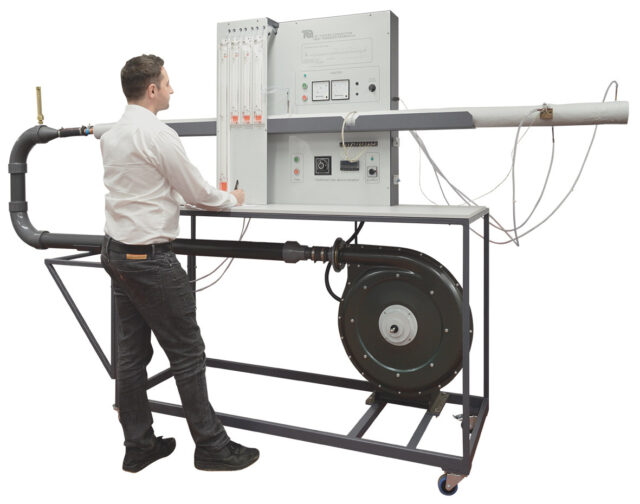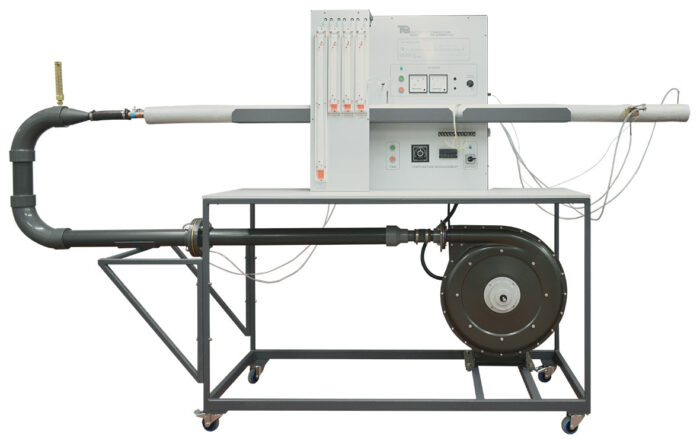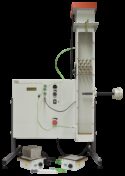Experiment
TD1
FORCED CONVECTION HEAT TRANSFER
Trolley mounted, mobile apparatus that demonstrates forced convection in pipes and heat transfer theory. Illustrates the derivation of the value of Nusselt number, determination of the Stanton number and determination of the validity of the Reynolds analogy for air.
If you have any questions or you'd like to discuss a product, please call us.
+44 1159 722 611FORCED CONVECTION HEAT TRANSFER
A basic knowledge of forced convection heat transfer theory is valuable in many engineering fields, especially heat-exchanger design. TecQuipment’s Forced Convection Heat Transfer apparatus allows students to examine the theory and associated formulae related to forced convection in pipes.
It is a frame holding a motor-driven fan, piping and instrumentation panel. It also has a large work surface for student convenience.
The fan runs at a constant speed and draws air through a control valve. The air then moves into a u-shaped pipe. An orifice plate in the pipe connects to a manometer on the instrumentation panel to measure the airflow rate. A larger manometer on the instrument panel measures the fan pressure drop.
The u-shaped pipe connects to a smaller diameter insulated and electrically heated copper ‘test pipe’. Students control the power input to the test pipe heater using a variable transformer, while noting the power using instrumentation on the panel. The test pipe discharges to atmosphere.
Pressure tappings each end of the test pipe connect to a manometer on the instrument panel to measure test length pressure drop. A thermometer measures the air temperature at the inlet to the test pipe. Thermocouples measure the temperature at various points along the test pipe wall. Further thermocouples measure temperature at various points within the test pipe insulation. Students use a digital indicator on the instrumentation panel to display thermocouple temperature readings.
To avoid overheating, a motor starter, isolator and safety interlock prevent the heater working unless there is a suitable flow of air.
The instrumentation panel also includes a manometer that connects to a Pitot tube traverse assembly to measure the velocity profile across the test pipe.
Learning outcomes
- Derivation of the value of Nusselt number (Nu) and comparison with empirical formula
- Calculation of the local heat transfer coefficient (h)
- Determination of the Stanton number (St)
- Calculation of the friction factor (f) and comparison with experimental value
- Determination of the validity of the Reynolds Analogy for air










